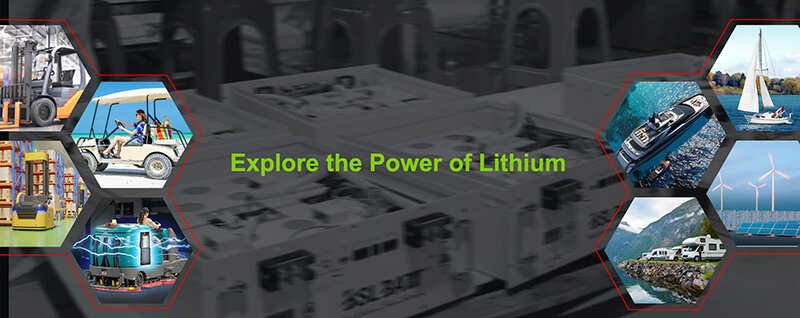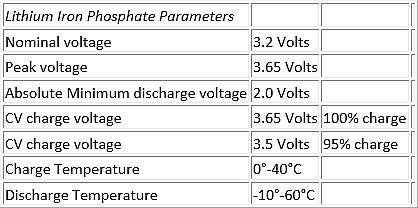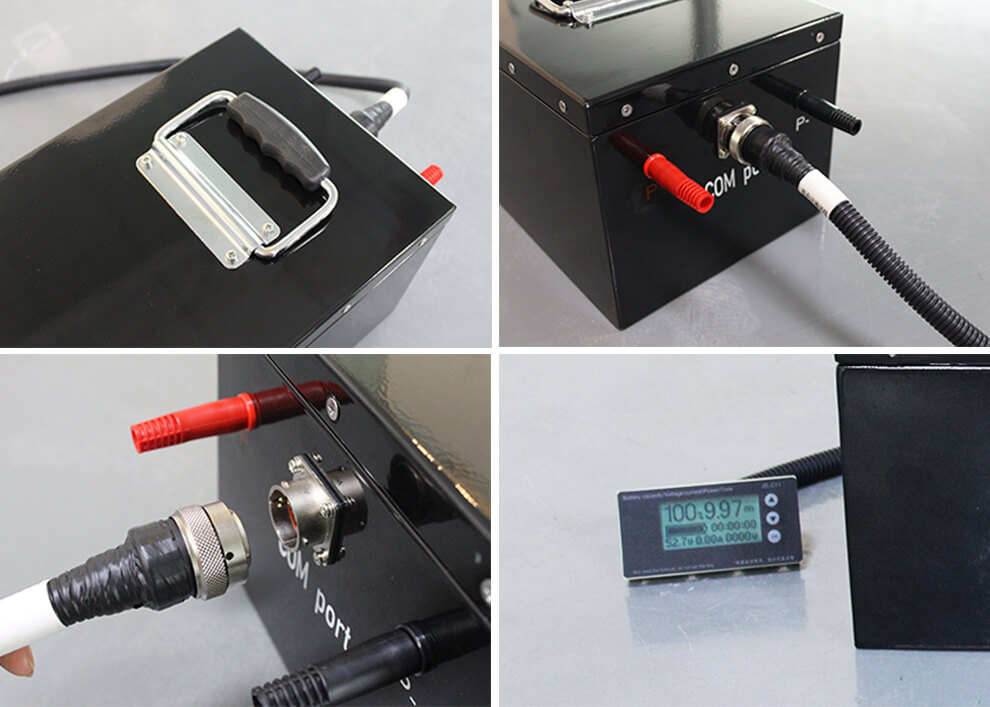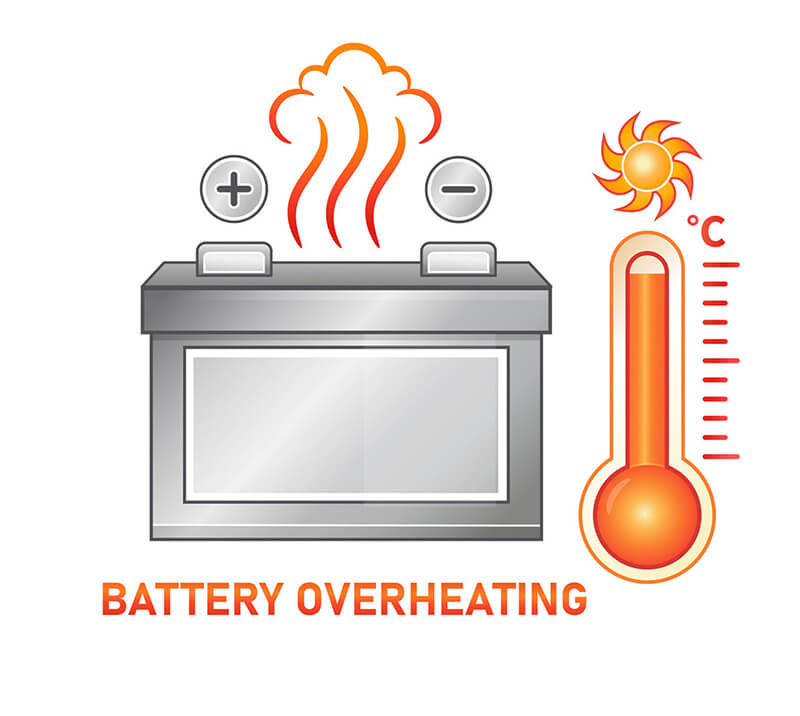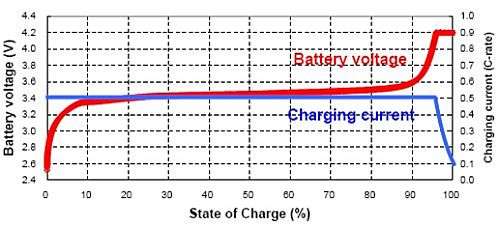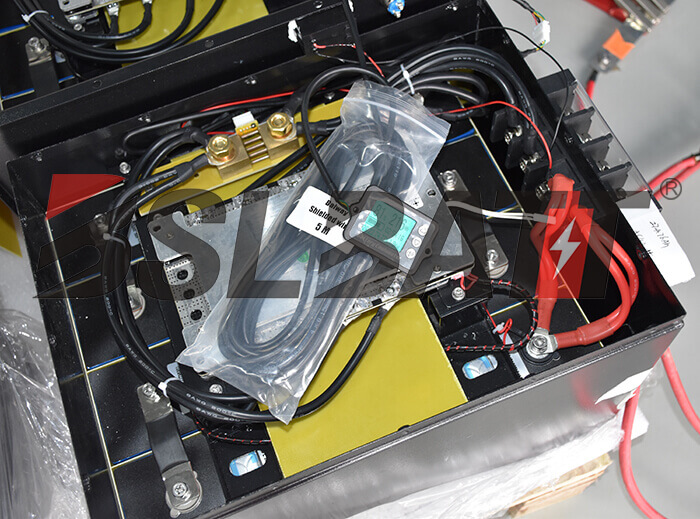
- China
- English
- Françai
- Español
- Deutsch
- Română
- العربية
- 한국어
- 日本語
- Italiano
- Português
- Gaeilge
- Dansk
- Čeština
- Русский
- Afrikaans
- Euskara
- Català
- Esperanto
- हिन्दी
- Ελληνικά
- Bahasa Melayu
- Polski
- Српски
- Kiswahili
- ภาษาไทย
- Tiếng Việt
- Türkçe
- Svenska
- Cymraeg
- Slovenčina
- Latviešu
- Malti
- Magyar
- Galego
- ગુજરાતી
- Eesti Keel
- বাংলা
- Shqip
- беларуская мова
- Nederlands
- Tagalog
- ქართული
- Íslenska
- Kreyòl Ayisyen
- Lietuvių
- Norsk
- slovenščina
- தமிழ்
- Українська
- ײִדיש
- اردو
- తెలుగు
- فارسی
- македонски
- ಕನ್ನಡ
- Bahasa Indonesia
- עברית
- Suomi
- Hrvatski
- Български
- Azerbaijani

Industry Application
Product Type
How to Charge Lithium Iron Phosphate Rechargeable Batteries
| If you’ve recently purchased or are researching lithium iron phosphate batteries (referred to as lithium or LiFePO4 in this blog), you know they provide more cycles, an even distribution of power delivery, and weigh less than a comparable sealed lead-acid (SLA) battery. Did you know they can also charge four times faster than SLA? But exactly how do you charge a lifepo4 lithium iron phosphate, anyway?
Everything You Need to Know About Charging Lithium Iron Phosphate (LiFePO4) Batteries Change can be daunting, even when switching from a lead-acid battery to a lifepo4 lithium iron phosphate battery. Properly charging your battery is critical and directly impacts the performance and life of the battery. Discover how to charge your BSLBATT LiFePO4 battery to maximize your investment.
As you consider your energy storage options for off-grid solar applications, LifePO4 is the solution to meet your needs. Lithium iron phosphate is the clear choice for energy storage in off-grid applications for several reasons. No matter the size of your system, lithium is the most cost-effective and efficient battery. LifePO4 has many benefits, including the lowest lifetime cost and unparalleled performance. Lithium Iron Phosphate (LiFePO4) batteries are safer than Lithium-ion cells and are available in a range of huge cell sizes between 5 and 100 AH with a much longer cycle life than conventional batteries: Cylindrical LiFePO4 cells are one of the hottest products among all series, they have many great features:
Valuable LifePO4 Features LifePO4 is able to cycle to 80 percent depth of discharge over 5000 times, which equates to over 13 years of performance. No other chemistries come close to competing with lithium’s battery life span. As for performance, lithium is very efficient. Lithium batteries charge 30 percent faster than lead-acid batteries. While discharging, LifePO4 maintains the proper voltage. Under-load lithium batteries are able to deliver sustained voltages greater than nominal pack voltage, which varies depending on the design and chemistry of your lithium cell. Most lithium batteries have a nominal voltage of 3.6 V per cell. Higher voltage results in lower amperage, which is ideal for electrical components and circuitry. Lower amperage facilitates cooler operation, extending the life spans of your gadgets.
LiFePO4 Battery Charging/Discharging Main Parameters Lithium Iron Phosphate is a type of Lithium-Ion battery since the energy is stored in the same way, moving and storing Lithium ions instead of lithium metal. These cells and batteries not only have a high capacity, but they can deliver high power. High-power Lithium Iron Phosphate batteries are now a reality. They can be used as storage cells or power sources. In addition, Lithium Iron Phosphate batteries are among the longest-lived batteries ever developed. Test data in the laboratory shows up to 2000 charge/discharge cycles. This is due to the extremely robust crystal structure of the iron phosphate, which does not break down under repeated packing and unpacking of the lithium ions during charging and discharging.
Uses Of LifePO4 Technology Many off-grid solar applications are used for telemetry and remote monitoring of various systems for data retrieval. In these areas, LifePO4 is increasingly the go-to battery solution. Built-in protection against low voltage and overcharge, coupled with a long battery life span, make lithium the most reliable option. LifePO4 technology is leading the way into the future of energy storage. Save your money and time by choosing lithium for your off-grid storage needs. The LiFePO4 battery has hybrid characters: it is as safe as the Lead-Acid battery and as powerful as the Lithium-Ion battery. The advantages of large format Li-Ion (and polymer) batteries containing Lithium Iron Phosphate (LiFePO4) are listed below: Charging Conditions Much like your cell phone, you can charge your lithium iron phosphate batteries whenever you want. If you let them drain completely, you won’t be able to use them until they get some charge. Unlike lead-acid batteries, lithium iron phosphate batteries do not get damaged if they are left in a partial state of charge, so you don’t have to stress about getting them charged immediately after use. They also don’t have a memory effect, so you don’t have to drain them completely before charging. BSLBATT LiFePO4 batteries can safely charge at temperatures between -4°F – 131°F (0°C – 55°C) – however, we recommend charging in temperatures above 32°F (0°C). If you do charge below freezing temperatures, you must make sure the charge current is 5-10% of the capacity of the battery.
A. Conventional charging During the conventional Lithium Ion charging process, a conventional Li-Ion Battery containing lithium iron phosphate (LiFePO4) needs two steps to be fully charged: Step 1 uses constant current (CC) to reach about 60% -70% State of Charge (SoC); Step 2 takes place when charge voltage reaches 3.65V per cell, which is the upper limit of effective charging voltage. Turning from constant current (CC) to constant voltage (CV) means that the charge current is limited by what the battery will accept at that voltage, so the charging current tapers down asymptotically, just as a capacitor charged through a resistor will reach the final voltage asymptotically. To put a clock to the process, Step 1 (60%-70% SOC) needs about one to two hours, and Step 2 (30%-40% SoC) needs another two hours. Because an overvoltage can be applied to the LiFePO4 battery without decomposing the electrolyte, it can be charged by only one step of CC to reach 95%SoC or be charged by CC+CV to get 100%SoC. This is like the way lead-acid batteries are safely force-charged. The minimum total charging time will be about two hours.
Charging Batteries in Parallel Best Practices When connecting your lithium batteries in parallel, it is best to charge each battery individually before making the parallel connection(s). If you have a voltmeter, check the voltage a couple of hours after the charge is complete and make sure they are within 50mV (0.05V) of each other before paralleling them. This will minimize the chance of imbalance between the batteries and maximize the performance of the system. Over time, if you notice the capacity of your battery bank has decreased, disconnect the parallel connections and charge each battery individually, then reconnect.
The Key Differences Between Lithium Iron Phosphate and Lead-Acid Batteries When It Comes to Charging Lithium batteries can charge at a much higher current and they charge more efficiently than lead-acid, which means they can be charged faster. Lithium batteries do not need to be charged if they are partially discharged. Unlike lead-acid batteries, which when left in a partial state of charge will sulfate, drastically reducing performance and life. BSLBATT lithium batteries come with an Internal Battery Management System (BMS) that protects the battery from being over-charged, whereas lead-acid batteries can be over-charged, increasing the rate of grid corrosion and shortening battery life. For more details on charging your BSLBATT lithium batteries, check out our Charging Instructions and contact us if you have any questions. |
A Guide to Choosing the Best 48V Lithium Golf Cart Battery
Would it be worth investing in a 48V ...
10 Exciting Ways To Use Your 12V Lithium Batteries
Back in 2016 when BSLBATT first began designing what would become the first drop-in replacemen...
BSLBATT Battery Company Receives Bulk Orders from North American Customers
BSLBATT®, a China Forklift battery manufacturer specializing in the material handling indust...
Fun Find Friday: BSLBATT Battery is coming to another great LogiMAT 2022
MEET US! VETTER’S EXHIBITION YEAR 2022! LogiMAT in Stuttgart: SMART – SUSTAINABLE – SAF...
Looking for new Distributors and Dealers for BSL Lithium Batteries
BSLBATT battery is a fast-paced, high-growth (200% YoY ) hi-tech company that is leading the a...
BSLBATT to Participate at MODEX 2022 on March 28-31 in Atlanta, GA
BSLBATT is one of the largest developers, manufacturers, and integrators of lithium-ion batter...
What makes the BSLBATT the Superior Lithium Battery for your Motive Power needs?
Electric forklift and Floor Cleaning Machines owners who seek the ultimate performance will fi...












